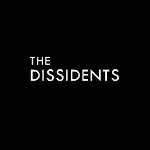
In the past two weeks, we've seen countless images of the Hollywood logo engulfed in flames on social media. Of course, it was later revealed that these images were all AI-generated, but that seems almost irrelevant. We’ve entered an era where truth is obscured by vision and bias, a digital age where, as long as you desire to witness something, it will eventually manifest in some form, manipulated by digital technology and algorithms, becoming your personalized reality.
The imagination (or perhaps longing) of Hollywood logos being reduced to ashes doesn’t just belong to the masses. Avant-garde filmmaker Kenneth Anger, long embedded in the film industry, published Hollywood Babylon in 1959, a gossip book blending fact, fiction, and hearsay, in which he depicted Hollywood as a land of sin, desire, and corruption (a portrayal not without some truth). This book became a long-standing bestseller, cementing Hollywood's reputation as the "Sodom and Gomorrah" of modern times.

For every person who believes Hollywood is a dream factory, there’s another who understands how it can crush the dreams, hopes, and goodness of idealists. The late David Lynch, in Mulholland Drive, told the story of a young actress destroyed by Hollywood’s dream machine. In 2014, another cinema maestro named David, David Cronenberg, also made a film focused on the depravity of Hollywood with Maps to the Stars. And guess what? The poster for that film also depicted the Hollywood sign ablaze.

Los Angeles is not just a site of moral decay in arthouse films—action flicks also love to depict it as a hell on earth. John Carpenter's 1996 dystopian action film Escape from L.A. sets the city as a penal colony, banished by the conservative American government. Criminals, sexual minorities, religious dissenters, and anti-capitalists are all exiled to a Los Angeles which has become an island due to a fictional earthquake. But on this island, a leader of a terrorist organization holds the remote control that can bring the world to a halt. As a result, anti-hero Snake Plissken, played by Kurt Russell, is released from prison by the government and sent to Los Angeles, becoming a pawn in the battle between the government and the terrorist group.

In line with popular perceptions, the conservative Christian president in the film immediately denounces Los Angeles as a modern Sodom and Gomorrah, leaving it to self-destruct. Later in the film, the Hollywood sign in Beverly Hills is once again burned by a wildfire, and Snake’s way to the terrorist base is through a glide down the mountainside, carried by the winds that fuel the flames. In January 2025, the imagery in this film is almost too real.


But the film’s foresight goes beyond these details. The rise of conservatism, the ideological rift in the United States, and the increasingly dire state of the environment are all evident in this film made almost thirty years ago. The America in the film has become a Christian fundamentalist nation, restricting freedoms such as belief, alcohol, smoking, food choices, and sex. Natural disasters like wildfires, earthquakes, tsunamis, and acid rain have become nothing more than common weather phenomena. The film sets its story in 2013, and we can only say that the pace of reality’s evolution has been a bit slower than Carpenter envisioned, but the direction and endpoint haven’t changed.
The reason why Carpenter is not just viewed as a B-movie director but also revered as an American film master by many critics and scholars is that he always embeds precise insights into social climate, ideology, and collective unconscious within the appearance of cheap B-movies. His 1978 film Halloween captured the 1970s American fear of free love; his 1988 film They Live caught the superficial falseness of the Reagan era’s liberalism, as well as people's resistance to a consumerist autocracy. By the time of Escape from L.A., Carpenter's disappointment with the government and society reached a new height: he no longer believes the ruling class can solve America's problems through self-correction, nor does he believe the Hollywood narrative of an individualistic hero destroying the power system to build a fairer new one.

At the end of the film, Snake Plissken doesn’t kill the president or exact revenge as we might expect, nor does he try to inspire the government army to stand with him, because he knows these actions won’t solve the systemic issues at the root. Killing the president would only bring another puppet to power; even if he were to rise to power, the blindness and stupidity of the people and the government would only push society back to its original path. So, Snake's final decision is to press the button on the remote control that destroys the power grid and stops the world. In a civilization system that is mad and beyond saving, this seemingly crazy choice is the most rational one.

In fact, I deeply agree with this ending. In 2025, we seem to be busily attacking one another, yet we fail to realize that humanity itself is the most harmful animal on the planet, and our stupidity will lead to our extinction. Escape from L.A. insightfully addresses this issue but offers no positive answers. However, we definitely should take certain insights from this uniquely perspectival film.














































View replies 4
View replies 0